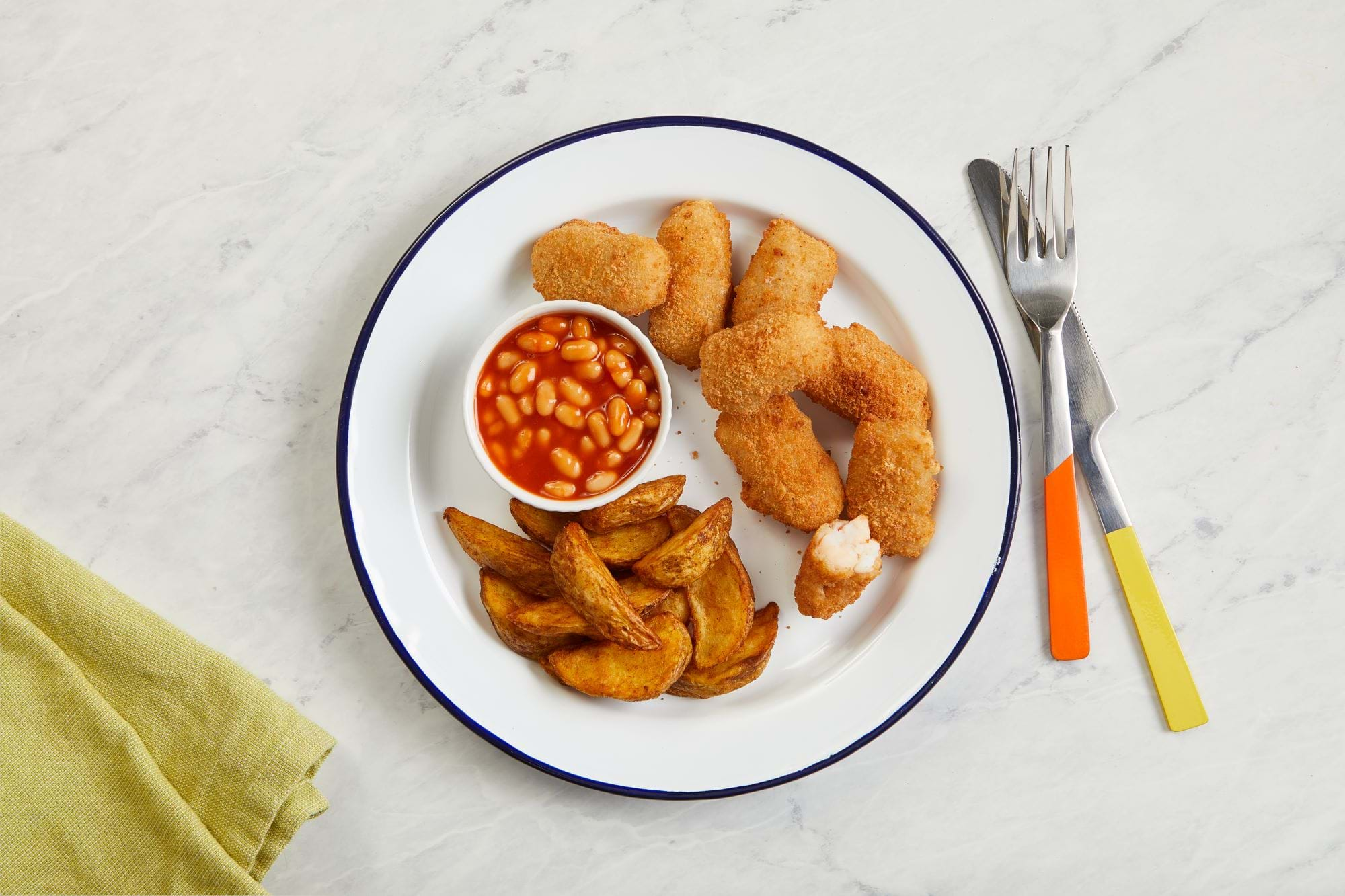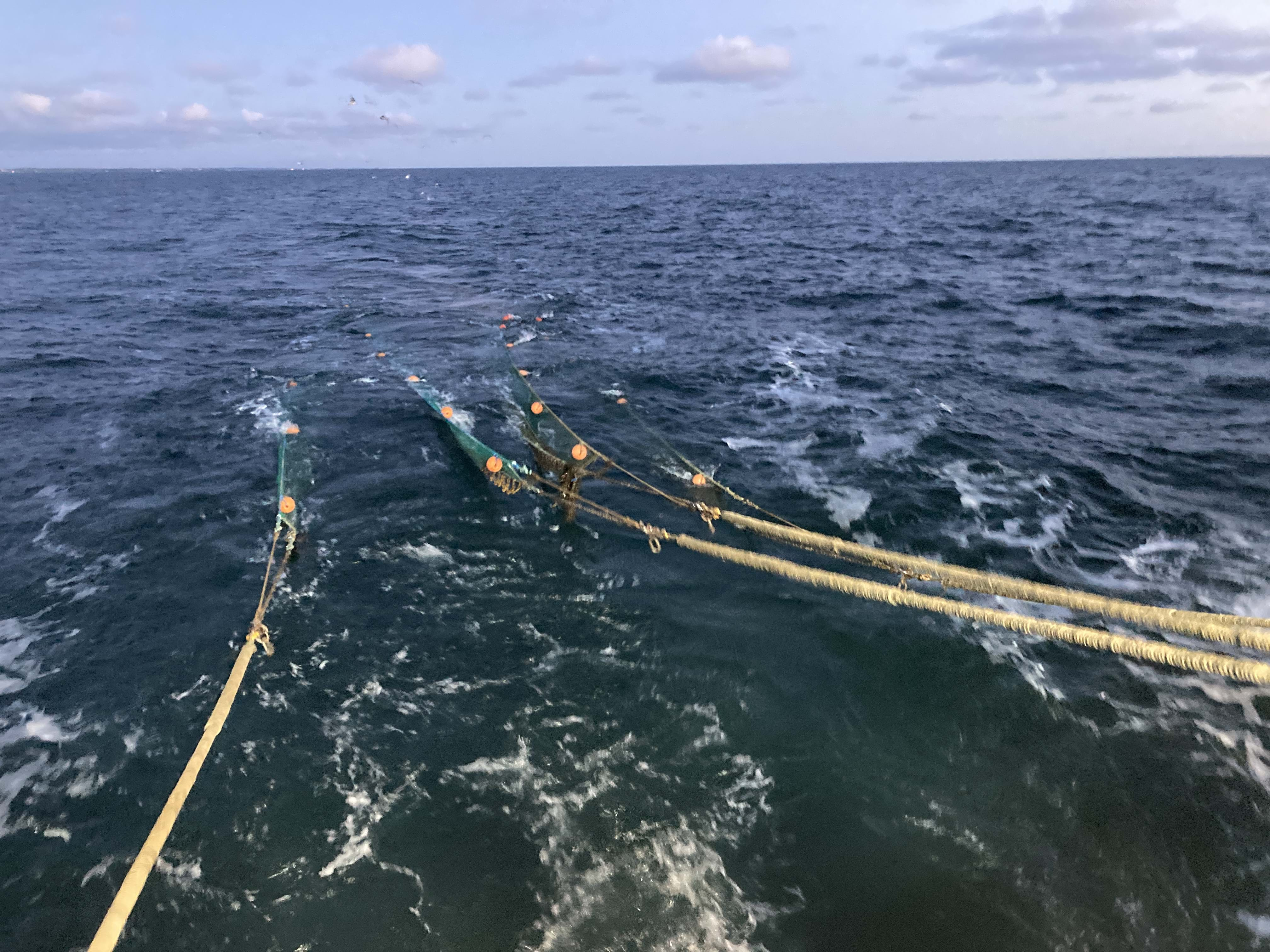Why scampi caught in UK waters can stay on the menu
This blog covers:
Recent media coverage suggests that consumers should avoid scampi because the fishery causes environmental damage. This is misleading.
The reality is much more nuanced and reflects a fishery where government, scientists, NGOs, and the seafood industry work together to improve the management of the fishery.
So what is Scampi? Scampi is a popular dish made from battered or breaded Nephrops tails. Nephrops (or Nephrops norvegicus to give the full scientific name), are also known as langoustine, Norway lobster or Dublin Bay prawns. The most premium scampi products are known as ‘single wholetail’ scampi, made of a single langoustine tail, and ‘wholetail’ or ‘whole’ scampi, made of a maximum of 3 whole tails. More budget friendly scampi products are made from reconstituted tail meat and will be labelled as ‘formed’ or “reformed” scampi.
Nephrops are a significant catch in the UK with nearly 59% of the Nephrops caught globally in 2021 coming from UK waters. That’s why the fishing industry, scientists and regulators work together to ensure it is sourced responsibly now and in the future.
There are two fishing methods used to catch Nephrops. Creels are used to catch and land live Nephrops, usually destined for high value export markets. Trawl nets are used to catch larger volumes of smaller Nephrops which are usually used to make scampi – a favourite in restaurants, pubs, fish and chips shops and a supermarket staple. It’s the trawl fishery that is currently attracting some negative media coverage. It would be wrong to say everything in the fishery is perfect, but it is also wrong to say that UK-caught Nephrops are unsustainable.

The Nephrops fishery consists of a number of sub-fisheries. These are surveyed and assessed annually by the International Council for the Exploration of the Seas (ICES) so we have good information on the health of the stocks and the state of the fishery. The most recent ICES scientific advice was issued in 2023 and shows that 9 of the 12 Nephrops sub-fisheries are at healthy levels and are being fished sustainably. There is further work required to improve the status of the remaining three sub-fisheries - this will need more science and research and possibly more restrictions on the volume of Nephrops that can be caught.
The UK Nephrops fishery has been part of a five-year Fisheries Improvement Project (FIP) since 2019. It is co-ordinated by the Marine Stewardship Council (MSC) and involves the Nephrops industry, government, NGOs and the research community. The FIP has a detailed work plan looking at:
- Management of the stock
- Bycatch of other fish species
- Interaction with endangered, threatened and protected species (ETP)
- Impact on sea-bed habitats
Suggestions that the Nephrops fishery is unsustainable because of the levels of bycatch associated with the fishery are incorrect.
Nephrops are usually caught as part of a mixed fishery – fisheries where you catch more than one species at a time. Nephrops are an important part of the catch, but so are other species, such as whiting, haddock and cod. Together commercial species can account for over 80% of the catch.
Fishing vessel owners will hold quota for these species, and they represent a key part of their fishing income. The Nephrops landed will usually go to factories for scampi production and the other commercial species will be processed and make their way into high street fishmongers, your local fish and chip shop and seafood restaurants. Suggesting that all bycatch is discarded is wrong.
Managing mixed fisheries, can be difficult and sometimes you need to take more restrictive management actions to ensure all species in the mixed fishery are fished at sustainable levels.
Unfortunately, ETP species can get caught in all types of fishing gear, but the fishing industry is working hard to avoid this happening.
Fishing vessel owners are required by law to report the capture or entanglement of any marine mammal in their gear. There is evidence that large marine animals such as baleen whales, basking sharks and turtles can get entangled in the ropes that are used to mark pots in the creel fishery. We also know from the Fisheries Improvement Project that ETP species can get caught in the trawl fishery.
Further work is required to better understand the extent of these captures, the impact they have on ETP species populations, and what measures can be taken to prevent them from happening. As part of the FIP, work is underway to gather information on the frequency of ETP captures in trawl fisheries. This project will equip fishermen with the ability to identify and monitor levels of bycatch for an agreed list of species, through ID guides and reporting mechanisms. This project is in its early stages, but the findings will be key in addressing this problem.
In Scotland, creel fishermen have also taken a proactive approach and formed the Scottish Entanglement Alliance in collaboration with NGOs (Non Government Organisations) and government organisations. The alliance aims to improve understanding of the scale and impact of marine animal entanglements and to find ways to avoid it happening.
There has been unfair criticism that the Nephrops fishery causes widespread damage to seabed habitats and some of the vulnerable marine life that lives there. Nephrops are usually caught from well-defined areas of soft mud and sandy habitats, which are naturally disturbed by burrowing animals. These habitats don’t usually contain vulnerable species, but where they do, measures are put in place to protect them, such as restrictions on trawl activity to protect sea pens (a small sea creature that looks like an old-fashioned quill pen).
However, our knowledge of these habitats is still patchy, but there is a commitment from the Nephrops industry and the science community to improve the information base and our overall understanding. As part of the FIP, Bangor University is assessing the effects of trawling for Nephrops across all seabed habitats. We know that trawling can have an impact on the seabed, but the research highlights that for many of these habitats, the impacts of Nephrops fishing (trawls and pots) does not cause serious or irreversible harm and that the Nephrops fishery meets the required MSC sustainability standard. However, it has also highlighted that there are still some vulnerable habitats which need further investigation and may need more protection.

The Nephrops industry has a good track record of responding to challenges. It is a leader in technological innovation. Some recent examples include:
- Modifications to fishing gear design help avoid the capture of certain species or allow them to escape safely if they do get caught. There are trials underway in Scotland in the Nephrops fishery that are using cameras to show what is happening when the fishing gear is in the water and how lights can minimise the chance of ETP species getting caught as recently reported in this BBC article: bbc.co.uk/news/technology-67093211
- A multi-year fishing gear research project in Northern Ireland is focused on reducing unwanted bycatch of quota species, avoiding juvenile fish species, and retaining commercially valuable target species.
- Work is also underway to to explore if innovative fishing gear developed in New Zealand, could be trialed in the UK Nephrops fishery. The Precision Seafood Harvesting technology improves selectivity and can reduce stress on ETP species caught in the fishing gear, which will help increase their chance of survivability.
Everyone involved in getting scampi to our plates is committed to a positive, long-term future for the Nephrops fishery. It sustains businesses and livelihoods; it supports coastal communities and nourishes people with a healthy protein.
Targeting and criticising the sale of scampi by retailers, pubs and restaurants is likely to create many more problems than it will ever solve. We know that scampi comes from a mixed fishery so reducing the demand for scampi is unlikely to reduce overall fishing pressure. But it could stop valuable monitoring and research on those other species that are not as well understood as Nephrops. It is much better to engage and work together to make the positive changes we all want to see.
So don’t worry – you and your customers can continue to enjoy scampi, knowing the fishing industry, scientists and government are working together to make sure it is sourced sustainably.
To share this blog and help others understand our scampi fisheries better, use the Social Media sharing buttons at the top of this page.
A full technical information note on the Nephrops fishery is available on request by emailing seafish@seafish.co.uk.